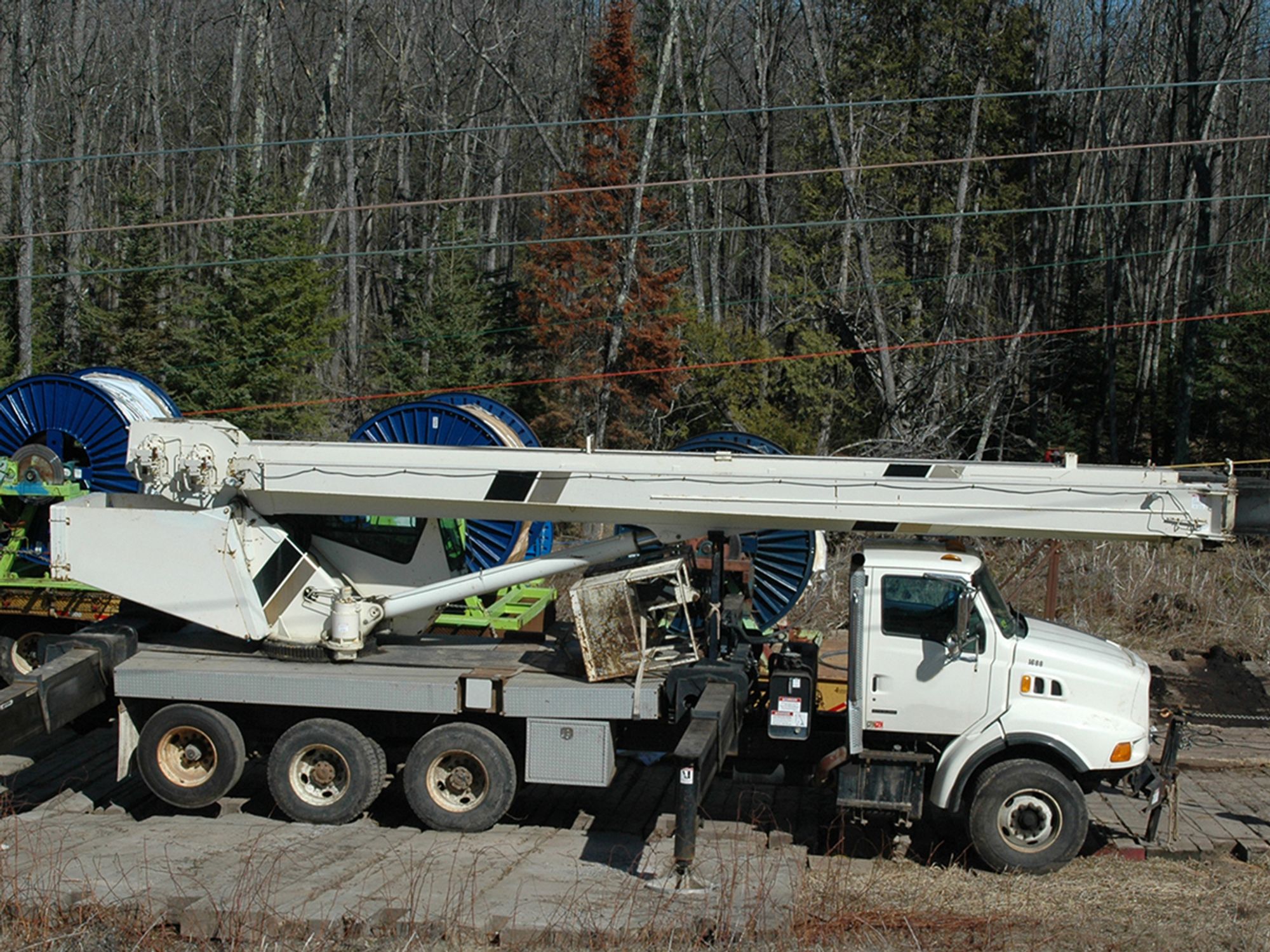Cranes within 20 feet of the power line

- If a crane could get within 20 feet of a power line, there are three options to minimize this hazard: de-energize and ground the line, rearrange the site (if possible) to maintain a 20-foot clearance, or use the minimum clearance distance corresponding to the line’s voltage.
If the crane could get closer than 20 feet to a power line, one of the three following options must be chosen.
Option 1 — De-energize and ground
Confirmation is received from the utility owner/operator that the power line has been de-energized and visibly grounded at the jobsite. This option is the safest and minimizes the possibility the crane would become energized if it did contact the line. If this option is chosen, the employer does not have to implement any of the other encroachment- or electrocution-prevention measures.
However, there are drawbacks to this. One is the time lag due to the amount of time needed to arrange for the utility owner to de-energize and ground the lines. Another is that when the construction project is small, the cost to de-energize and ground the lines can be excessive in comparison to the cost of the job.
Option 2 — Maintain 20-foot clearance
This option requires a minimum 20-foot clearance be maintained at all times. (If the work requires a closer approach than 20 feet, then Option 3 must be used.) The advantage of using this option is that employers don’t have to determine the exact voltage of the power lines; they only have to determine it is not more than 350kV.
To help make sure the 20-foot distance is not breached, the following precautions are required:
- Planning meeting. A planning meeting must be held with the crane operator and other workers who will be in the area of the equipment or load. During the meeting, the location of the power line(s) and the steps that will be used to prevent intrusion closer than 20 feet must be reviewed.
- Tag lines. If used, they must be non-conductive.
- Warning line. An elevated warning line, barricade, or line of signs should be erected that is in view of the operator. It must have flags or other high-visibility markings to make it easier to see.
- The warning line (or barricade or line of signs) must be 20 feet from the power line. If the crane operator can’t see it, a dedicated spotter must be used.
- Additional safeguards. In addition to the above, at least one of the following must be implemented. (These requirements do not apply to Subpart V — Power Transmission and Distribution work.)
- Proximity alarm set to give sufficient warning to prevent encroachment.
- Dedicated spotter.
- Range control warning device that is set to give sufficient warning to prevent encroachment.
- Limiting device set to prevent encroachment.
- Insulating link installed between the end of the load line and the load.
Option 3 — Follow Table A clearance
For this option, the employer must determine the power line’s voltage (by getting the voltage from the utility owner/operator), then determine whether any part of the crane, load line, or load (including the rigging and lifting accessories) could get closer to the power line than the minimum approach distance allowed in Table A.
When making this determination, assume the crane will be operated up to its maximum working radius when in the work zone, and comply with the minimum clearance distances in Table A. Note that, depending on the voltage, minimum clearance distances can be closer than the 20-foot clearance required for Option 1.
| Table A — Minimum clearance distances | |
|---|---|
| Voltage (nominal, kV, alternating current) | Minimum clearance distance (feet) |
| up to 50 | 10 |
| over 50 to 200 | 15 |
| over 200 to 350 | 20 |
| over 350 to 500 | 25 |
| over 500 to 750 | 35 |
| over 750 to 1,000 | 45 |
| over 1,000 | As established by the utility owner/operator or a registered professional engineer who is a qualified person with respect to electrical power transmission and distribution. |
The utility owner/operator must provide the requested voltage information within two days of the request.
If the crane could get closer to the power line than the minimum approach distance allowed in Table A, the same precautions mentioned in Option 2 apply.
